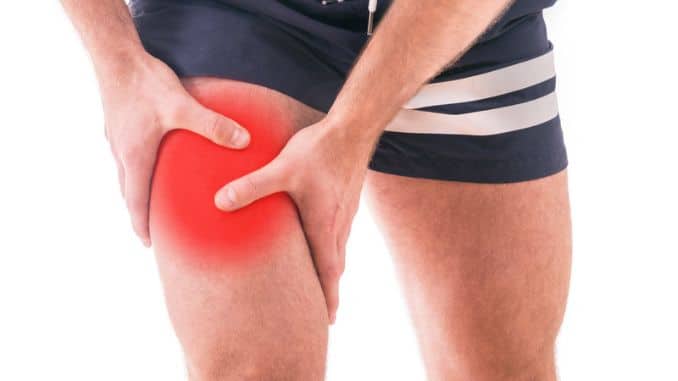
Keeping our quads flexible and strong is important if we want to stay active. When our quads get tight, it can cause discomfort, make it harder to move, and even increase the risk of injury—especially if we work out regularly.
The good news is, with a few easy stretches and tips, we can ease tightness, help our muscles work better, and improve our overall performance. In this guide, we’ll share some simple stretches and tricks to keep our quads healthy and flexible so we can keep doing what we love, without the pain.
What Causes Tight Quads?
- Muscle overuse, lack of stretching or warm-up, injury to the quad or surrounding area, inactivity, and dehydration can cause tight quads.
- Standing or sitting for long periods can cause tightness in the front of the upper leg.
- Overworking the quads through repetitive motions such as running and cycling can cause tightness.
- Engaging in strenuous exercise without giving the muscle time to recover fully can cause tightness.
- Tight hip flexors can also contribute to tight quads [1], so it’s essential to know how to loosen tight quad muscles.
Signs and Symptoms of Tight Quads
- Difficulty bending the knee
- Pain during physical activity
- Lower back discomfort
- Tight hip flexors
- Reduced endurance in legs
- Muscle fatigue after exercise
- Visible muscle tension
- Swelling around the knee
Impact of Tight Quads and Knee Pain
- Weak quadriceps: People with knee pain often have weaker quads.
- Reduced muscle activation: The quads don’t work as well, which can make the pain worse.
- Knee pain and disability: Weak quads are linked to more knee pain and trouble moving around.
- Psychological impact: Depression can make knee pain and then disability worse.
Quad Stretches
1. Standing Quad Stretch
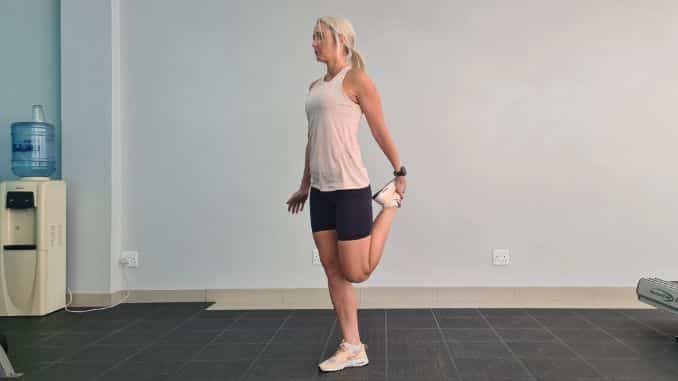
- Begin in an upright standing position, maintaining good alignment with your head, shoulders, and then hips.
- Stand on one leg and then grab your other ankle with your hand. Pull your ankle gently towards your buttocks.
- Hold the position for several deep belly breaths, in through your nose and out through your mouth.
- Relax and then repeat the movement on the opposite side.
2. Pigeon Pose Quad Stretch
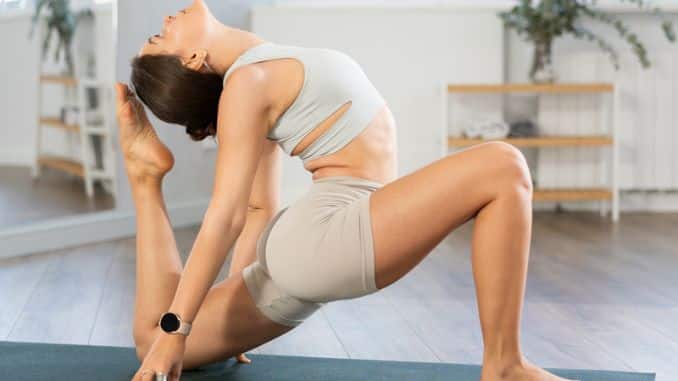
- Begin in a kneeling position, with one leg bent in front of you, and the other leg extended straight behind you with the top of the foot resting on the floor.
- Contract your core and gently shift your hips forward, keeping your back leg extended and feeling a deep stretch in the quads and then hip flexors.
- Reach back with your hand to grab the foot of the extended leg, pulling it toward your glutes to increase the stretch.
- Hold the position for several deep belly breaths, in through your nose and out through your mouth.
- Relax and repeat the movement on the opposite side.
3. Lunge with Quad Stretch
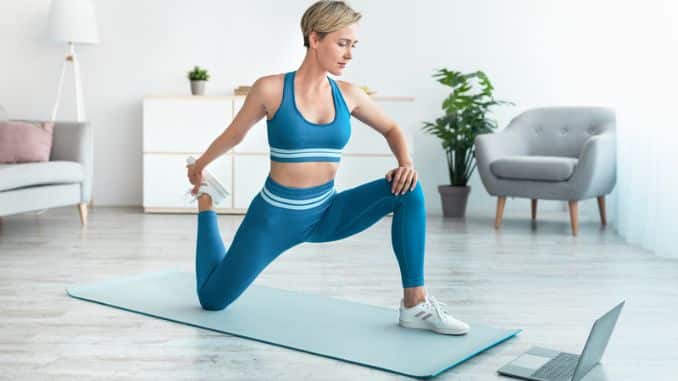
- Begin in an upright kneeling position on a mat, ensuring good alignment with your head, shoulders, and then hips.
- Step one foot forward into a deep lunge position, aligning your front knee at a 90-degree angle while keeping your back leg extended behind you.
- Bend your back knee and then bring your foot towards your glutes, holding it with the hand on the same side.
- Contract your core and gently push your hips forward to deepen the stretch in your quadriceps and hip flexors.
- Hold the position for several deep belly breaths, in through your nose and out through your mouth.
- Relax and then repeat the movement on the opposite side.
4. Reclining Quad Stretch
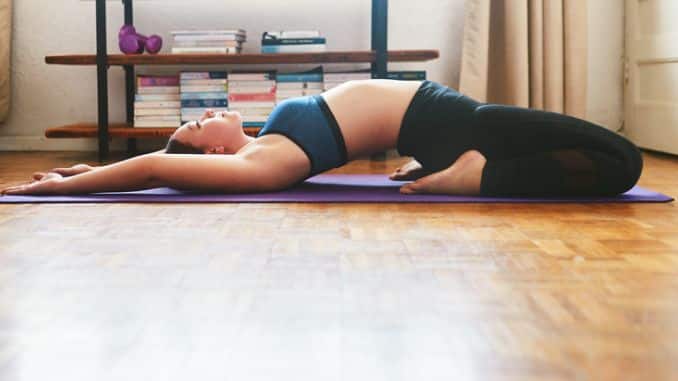
- Lie on your back on the floor with your knees bent and your feet flat on the floor, maintaining good alignment with your head, shoulders, and hips.
- Tighten your abdominal muscles. Grab one ankle with your hand and gently pull it toward your glutes while keeping your other leg bent and flat on the floor.
- You should feel a stretch in the front of your thigh and hip.
- To deepen the stretch, you can extend your arms overhead, hold the position for several deep belly breaths, in through your nose and out through your mouth.
- Relax and repeat the movement on the opposite side.
5. Wall Quad Stretch
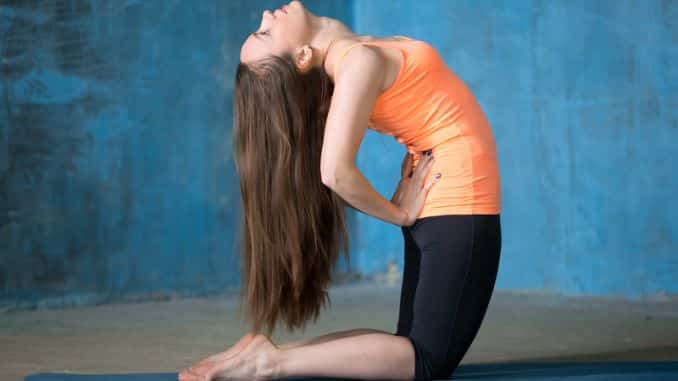
- Begin in an upright standing position behind a wall, maintaining good alignment with your head, shoulders, hips, and legs.
- Step one foot forward and move into a deep lunge position, ensuring your front knee is bent at a 90-degree angle.
- Bend your back leg, place your foot up against the wall, and learn how to loosen tight quad muscles.
- Place one hand on your hip while the other hand on your knee.
- Engage your core and gently arch your mid-back to open up your chest as you gaze towards the ceiling.
- Hold the position for several deep belly breaths, in through your nose and out through your mouth.
- Relax, and repeat the movement on the opposite side to help loosen tight quad muscles.
“Dr. Jo, a licensed Physical Therapist and Doctor of Physical Therapy, [2] recommends that doing the standing and kneeling quad stretches can help relieve tight quads and improve flexibility”
Benefits of Quad Stretches
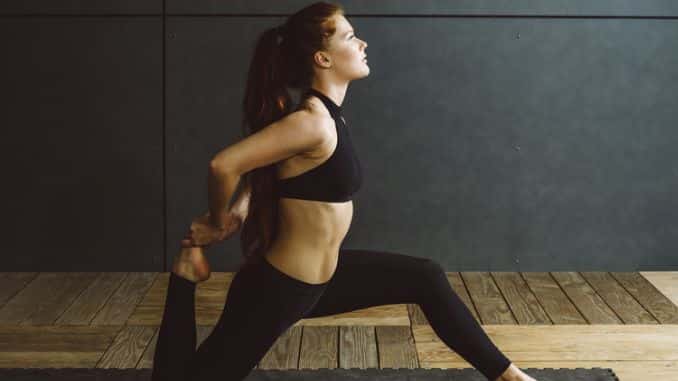
- Increased Strength [3]: Both static and dynamic stretching helped increase the strength of the quadriceps (and hamstrings) when tested at different contraction speeds.
- Enhanced Range of Motion: Regular stretching can improve flexibility and range of motion, making muscles less stiff.
- Prevention of Muscle Imbalance: Stretching may help reduce the imbalance between hamstrings and quadriceps, important for joint stability and reducing injury risk during high-speed activities like running, jumping, and pivoting.
- Stretching the quads can reduce the risk of overuse injuries such as IT band tightness and tendonitis in the hips and knees.
- Mobile quads and knowing how to loosen tight quad muscles can improve stride or pedal stroke efficiency and reduce the risk of injury.
- Flexible quads can help with overall performance and mobility, preventing pain with walking, running, playing sports, and doing everyday activities.
Conclusion
When it comes to keeping our muscles strong and flexible, stretching our quadriceps is essential. Whether we’re stretching dynamically or statically, we can see improvements in muscle strength and overall power. While stretching might not immediately fix muscle imbalances, it definitely plays a big role in preventing injury and helping us move better.
Remember, long-term training is key to balancing the strength between our hamstrings and quadriceps, but with regular stretching, we’re on the right track to better mobility, performance, and less pain. So let’s keep stretching and stay active, knowing it’s a crucial step toward a healthier, stronger body!
Transform your day in just minutes! Discover Advanced 11 Daily Stretches designed to make you feel stronger, more flexible, and energized. Join us to elevate your routine and start feeling and looking amazing every day!
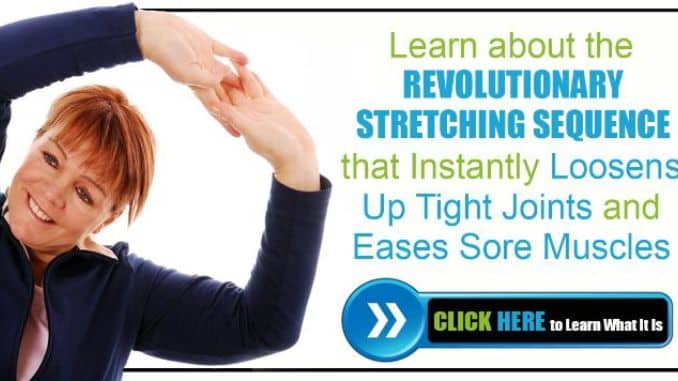
FAQs
1. What causes extremely tight quads?
Tight quads can be caused by overuse (like intense exercise), dehydration, poor posture, muscle imbalances, or injury.
2. Should you massage a tight quad?
Yes, gentle massage can help relieve tightness, but avoid deep pressure if the muscle is injured or severely strained.
3. How long do tight quads last?
Tight quads typically last from a few days to a week. If due to overuse or minor strain, they may resolve in 1-2 days, but if caused by injury, it can last 1-2 weeks or longer.
4. How do you loosen tight thighs?
Stretching, foam rolling, gentle exercise, applying heat, and staying hydrated can all help loosen tight thighs.
5. How do you release tight quads?
To release tight quads, try stretching, foam rolling, resting the muscle, applying heat, and drinking plenty of water.
